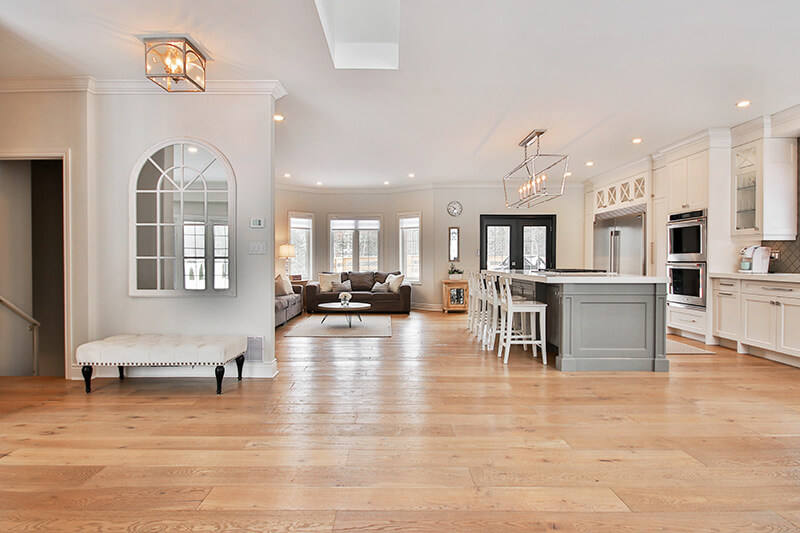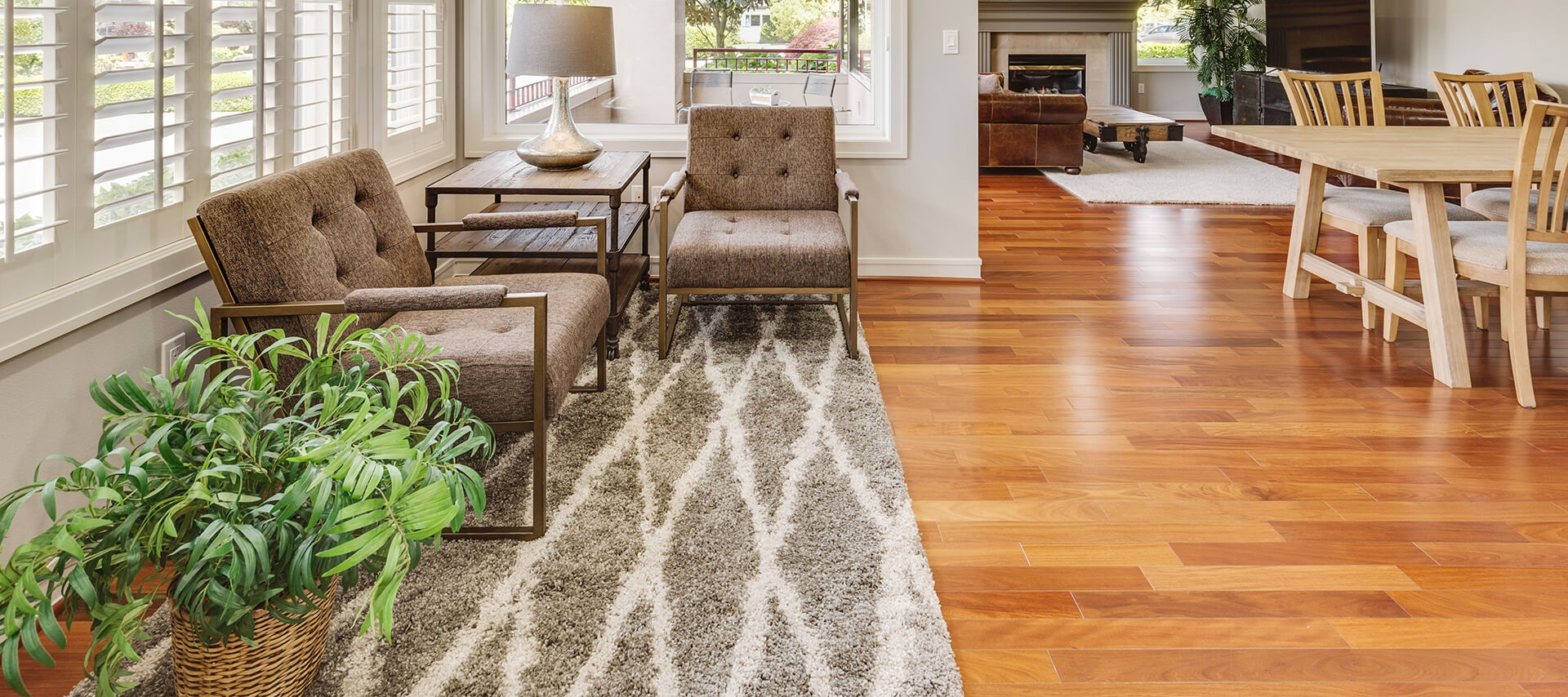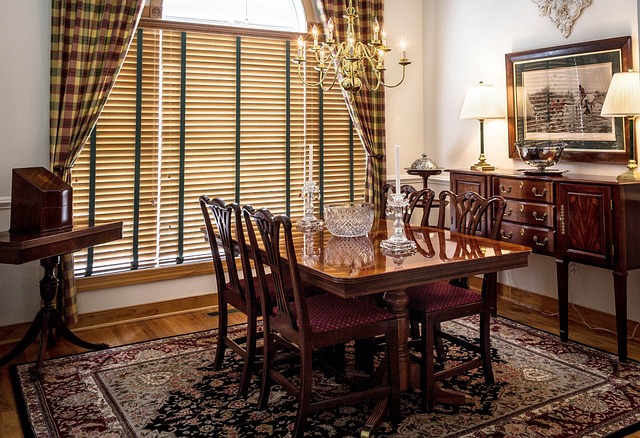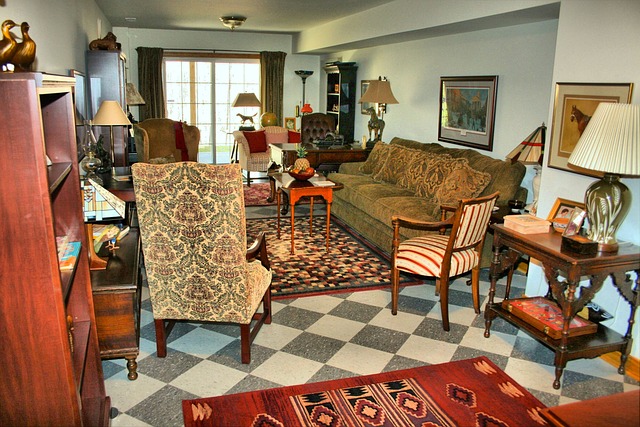Tile flooring patterns have the power to completely transform any space, creating a visually stunning and unique environment. With endless options available, ranging from classic designs to contemporary motifs, you can find the perfect tile pattern to suit your style and preferences. By carefully selecting the right pattern, you can enhance the overall aesthetic appeal of your home.
Contrast and variation in tile patterns can add visual interest and create focal points within a room. Whether you are looking to update your kitchen, corridor, or any other space, incorporating borders or variations in size can make a significant impact. The way tiles are installed, such as offsetting each row or using different layouts, can further elevate the look of your floor.
With so many possibilities to choose from. Take your time exploring different options before making a decision. Consider the style of your home and the atmosphere you want to create.

Table of Contents
ToggleClassic Tile Flooring Patterns
Classic tile flooring patterns have stood the test of time, adding a touch of timeless elegance to any room. Let’s explore some popular classic tile patterns that can transform your space into something truly special.
Herringbone And Basketweave
Herringbone and basketweave are two classic tile patterns that exude sophistication and charm. The herringbone pattern consists of rectangular tiles arranged in a zigzag pattern, creating a visually striking look. It adds depth and dimension to floors, making them appear larger and more spacious. On the other hand, the basketweave pattern features square or rectangular tiles arranged in a woven design, resembling an actual basket. This pattern adds texture and visual interest to floors while maintaining a classic appeal.
Checkerboard Patterns
Checkerboard patterns offer a traditional yet stylish option for tile flooring. This pattern involves alternating two contrasting colors of square tiles to create a checkered effect. The result is a floor that looks both sophisticated and inviting. Checkerboard patterns work well in various settings, from kitchens and bathrooms to entryways and living rooms. They add character to any space while providing a timeless aesthetic.
Versatile Subway Tiles
Subway tiles have become synonymous with clean, simple design that never goes out of style. These rectangular tiles are typically installed in an offset brickwork pattern, creating clean lines and an understated elegance. Subway tiles come in various sizes, but the standard 3×6-inch size is the most popular choice for achieving a classic subway tile look. Their versatility allows them to complement both traditional and contemporary interior styles.
You can opt for white subway tiles for a crisp and bright appearance or experiment with different colors for added flair.
Contemporary Tile Flooring Patterns
Contemporary tile flooring patterns are all about bringing a modern touch to your floors. They offer a fresh and stylish look that can transform any space into a trendy haven. Let’s explore some of the popular options for contemporary tile flooring patterns.
Geometric Patterns With Bold Shapes And Colors
One of the key features of contemporary tile flooring is the use of geometric patterns with bold shapes and colors. These patterns add a sense of energy and vibrancy to your floors, making them stand out in any room. Whether it’s hexagons, diamonds, or intricate mosaics, geometric tiles create a visually striking effect that catches the eye.
Chevron Patterns For A Trendy Look
If you want to infuse your space with a trendy and dynamic vibe, consider using chevron patterns for your tile flooring. Chevron tiles feature an interlocking design that forms V-shaped zigzag lines across the floor. This pattern adds movement and visual interest to any room, making it an excellent choice for contemporary spaces.
Large Format Tiles In Neutral Tones
For those who prefer a sleek and minimalist aesthetic, large format tiles in neutral tones are an ideal option. These oversized tiles create a seamless look on your floors while exuding elegance and sophistication. The use of neutral colors such as white, gray, or beige enhances the clean lines and simplicity of contemporary design.
It’s important to choose gauged porcelain tile (GPT). GPT ensures uniform thickness throughout each tile, resulting in a flawless installation that complements the modern aesthetic.
In addition to flooring, these large format tiles can also be used as backsplash material in kitchens or bathrooms. This creates a cohesive look throughout the space while adding texture and visual appeal.
Contemporary tile flooring patterns offer endless possibilities for creating a stylish and up-to-date look in your home. Whether you prefer bold geometric designs, trendy chevron patterns, or the simplicity of large format tiles, there’s a pattern that will suit your taste and elevate the overall aesthetic of your space.
Transitional Tile Flooring Patterns
Transitional tile flooring patterns offer the perfect blend of classic and contemporary styles. By combining traditional elements with modern twists, these patterns create a unique and versatile look for any space. Let’s explore some key features of transitional tile flooring patterns.
Random Offset Layouts
One popular trend in transitional tile flooring is the use of random offset layouts. This design technique gives a fresh twist to traditional tile designs by creating an updated and dynamic look. Instead of aligning tiles in a straight line, the tiles are installed with slight variations in their positioning. This creates an interesting visual effect that adds depth and movement to the floor spaces.
Blending Sizes And Shapes
Another characteristic of transitional tile flooring patterns is the blending of different sizes and shapes. This eclectic approach allows for creativity and customization, resulting in a balanced yet distinctive style. Mixing square tiles with rectangular planks or incorporating geometric shapes can add visual interest to your floors. The combination of various sizes and shapes creates a harmonious pattern that is both visually appealing and unique to your space.
Herringbone Pattern
The herringbone pattern is a classic choice for transitional tile flooring. It involves laying rectangular tiles or planks at 45-degree angles to create a zigzag or V-shaped pattern. This timeless design adds elegance and sophistication to any room. Whether you choose natural stone, ceramic, or porcelain tiles, the herringbone pattern will enhance the overall aesthetic appeal of your space.
Corridor Pattern
The corridor pattern is another popular option for transitional tile flooring. Also known as “offset running bond,” this layout involves installing rectangular tiles or planks in an alternating pattern where each row starts halfway between the joints of the previous row. The result is a visually striking floor that adds depth and dimension to narrow spaces like hallways or corridors.
Mixing Classic And Contemporary Styles
Incorporating classic tile patterns into contemporary spaces can add a touch of character and charm. By mixing these two styles, you can create a unique fusion that combines the best of both worlds.
Pairing Geometric Tiles With Vintage-Inspired Accents
One way to achieve this blend is by pairing geometric tiles with vintage-inspired accents. For example, you could opt for classic white subway tiles in a kitchen design and pair them with retro light fixtures or antique hardware. This juxtaposition of old and new elements creates an interesting visual dynamic that adds depth to your space.
Balancing Contrasting Elements
Another approach is to balance contrasting elements within your tile flooring patterns. You can achieve this by using different shapes, colors, or sizes of tiles in a single design. For instance, you might choose to combine stacks of rectangular tiles with running bond patterns in various shades. This contrast between the orderly stacks and the diagonal flow of the running bond creates a visually striking combination.
There are several benefits:
- Timeless Look: Incorporating classic tile patterns ensures that your space will stand the test of time. These designs have been used for decades and continue to be popular due to their enduring appeal.
- Versatile Design Options: By blending classic and contemporary styles, you open up a world of design possibilities. You can experiment with different combinations of shapes, colors, and textures to create a truly unique look.
- Adds Character: The combination of classic and contemporary elements adds character and personality to your space. It helps create an interesting focal point that draws attention.
- Reflects Your Style: Mixing these two styles allows you to showcase your personal taste in interior design. It’s an opportunity to express yourself creatively while still maintaining a cohesive overall look.
However, it’s important to strike the right balance when incorporating these contrasting styles. Here are a few tips to keep in mind:
- Consider The Overall Aesthetic: Make sure the classic and contemporary elements you choose complement each other and fit into the overall aesthetic of your space.
- Start Small: If you’re unsure about how these styles will work together, start with small accents or accessories before committing to larger tile flooring patterns.
- Seek Professional Advice: Consulting with an interior designer can provide valuable insights and guidance on how to successfully mix classic and contemporary styles.
Tips For Choosing The Right Pattern
Consider The Size Of The Room When Selecting Tile Flooring Patterns For Optimal Visual Impact.
When choosing a tile flooring pattern, it’s important to consider the size of the room you’ll be installing it in. Larger spaces can accommodate bold and intricate patterns without overwhelming the area, while smaller rooms may benefit from simpler designs that create an illusion of more space. For example, if you have a small bathroom, opting for a light-colored tile with a simple pattern like a running bond or herringbone can make the room appear larger and more open.
Take Into Account Existing Decor And Architectural Features To Ensure Cohesive Design Flow.
To create a cohesive and visually appealing space, it’s essential to consider existing decor and architectural features when selecting your tile flooring pattern. If you have traditional furnishings and accents, classic patterns like pinwheel or checkerboard can complement the overall aesthetic. On the other hand, contemporary interiors can be enhanced with geometric or abstract patterns that add a modern touch. By taking into account your existing design elements, you can ensure that your chosen tile pattern seamlessly integrates with the rest of your space.
Experiment With Different Samples Or Use Online Visualization Tools To Visualize How Patterns Will Look In Your Space.
Before committing to a specific tile flooring pattern, it’s helpful to experiment with different samples or utilize online visualization tools. This allows you to get a better sense of how each pattern will look in your specific space. You can order small sample tiles and lay them out on your floor to see how they interact with your lighting and furniture. Alternatively, many websites offer virtual room visualizers that allow you to upload photos of your space and overlay different tile patterns digitally. These tools provide valuable insights into how each pattern will transform your room before making any final decisions.
Care And Maintenance Of Tile Flooring
Proper care and maintenance are essential for keeping your tile flooring looking its best. While tile is known for its durability, it still requires regular cleaning to ensure longevity. Here are some tips to help you maintain your tile flooring:
Regular Cleaning Using Appropriate Products
To keep your tile flooring in top condition, it’s important to clean it regularly using appropriate products. Avoid using harsh chemicals or abrasive cleaners that can damage the tiles or strip away their protective coating. Instead, opt for mild cleansers specifically designed for tile surfaces. These gentle cleaners will effectively remove dirt and grime without causing any harm.
Properly Sealing Grout Lines
Grout lines are an integral part of tile flooring, but they can be prone to staining or discoloration over time. To prevent this, make sure to properly seal the grout lines after installation and periodically thereafter. Grout sealer creates a protective barrier that prevents liquids and dirt from penetrating the grout, making it easier to clean and maintain.
Regular Sweeping Or Vacuuming
Regular sweeping or vacuuming is crucial for preventing dirt buildup on your tile floors. Dirt particles can act like sandpaper when walked upon, potentially scratching or damaging the tiles’ surface over time. Use a soft-bristle broom or a vacuum cleaner with a brush attachment to remove loose debris from the floor regularly.
Promptly Wipe Spills
Accidents happen, and spills are inevitable in any household. However, it’s important to promptly wipe up spills on your tile flooring as soon as they occur. Liquids left sitting on the tiles can seep into the grout lines or even stain the tiles themselves if not cleaned up quickly enough.
Avoid Excessive Water Exposure
While most tiles are water-resistant, excessive exposure to water can still cause issues over time. Avoid leaving standing water on your tile floors for extended periods as it can seep into the grout lines and potentially cause mold or mildew growth. Consider using mats or rugs in areas prone to water splashes, such as near sinks or showers.
Regular Maintenance Checks
Perform regular maintenance checks on your tile flooring to ensure its condition remains optimal. Look for any signs of damage, such as cracked or loose tiles, and address them promptly to prevent further issues. If you notice any damaged grout lines, consider regrouting to maintain the integrity of your tile flooring.
By following these care and maintenance tips, you can keep your tile flooring looking beautiful for years to come. Remember to clean regularly using appropriate products, seal grout lines, sweep or vacuum regularly, promptly wipe spills, avoid excessive water exposure, and perform regular maintenance checks.
Conclusion
In conclusion, this blog post has explored a range of tile flooring patterns, from classic to contemporary, as well as transitional options that blend the best of both worlds. By understanding the characteristics and design elements of each style, homeowners can make informed decisions when choosing the right pattern for their space.
To ensure a successful outcome, it is important to consider factors such as the overall aesthetic of the room, the size and shape of the tiles, and the level of maintenance required. Taking into account personal preferences and individual lifestyle needs will help create a harmonious and functional living environment.
As you embark on your tile flooring journey, remember to consult with professionals who can provide expert advice tailored to your specific requirements. Whether you opt for a timeless classic pattern or embrace a bold contemporary design, investing in high-quality materials and proper installation will guarantee long-lasting beauty and durability.
Take this opportunity to transform your home with stunning tile flooring patterns that reflect your unique style. Start exploring various options today and elevate your space with elegance and sophistication.
Struggling To Find The Perfect Tile Flooring That Aligns With Your Unique Vision?
Nestled in the bustling heart of Concord, California, K Floors is your go-to solution for bringing that vision to life. We’re more than just a flooring company; we’re your partners in creating spaces that exude quality, reliability, and an unmatched selection. Whether you’re envisioning the classic elegance of marble tiles, the rustic charm of ceramic, or the modern appeal of porcelain, our range is as varied as your imagination.
The K Floors difference is unmistakable. Eliminate the guesswork in selecting the ideal tile flooring. Our team of seasoned experts is committed to assisting you at every turn. From complimentary in-home consultations, where we bring our expertise right to your doorstep, to our collaborations with leading vendors, we ensure that excellence isn’t just a claim—it’s our hallmark. Explore our extensive collection, featuring a variety of tile options including Ceramic, Porcelain, Mosaic, and more. Your perfect floor is not just a purchase; it’s a carefully made choice.
At K Floors, we’re dedicated to providing an experience, not just a sale. Based in Concord, California, we’ve skillfully merged traditional craftsmanship with modern styles, ensuring every tile we lay down transforms your space into a place that feels like home. Whether it’s a residential makeover or a commercial revamp, each project we embrace is a reflection of our dedication to quality and authenticity. So why wait? Step into K Floors, and let’s embark on the journey to your ideal tiled floor together.
Disclaimer
The materials available on this website are for informational and entertainment purposes only and not to provide legal advice. You should contact your attorney to obtain advice concerning any particular issue or problem. You should not act or refrain from acting based on any content included in this site without seeking legal or other professional advice. The information presented on this website may not reflect the most current flooring developments. No action should be taken in reliance on the information contained on this website and we disclaim all liability concerning actions taken or not taken based on any or all of the contents of this site to the fullest extent permitted by law.



